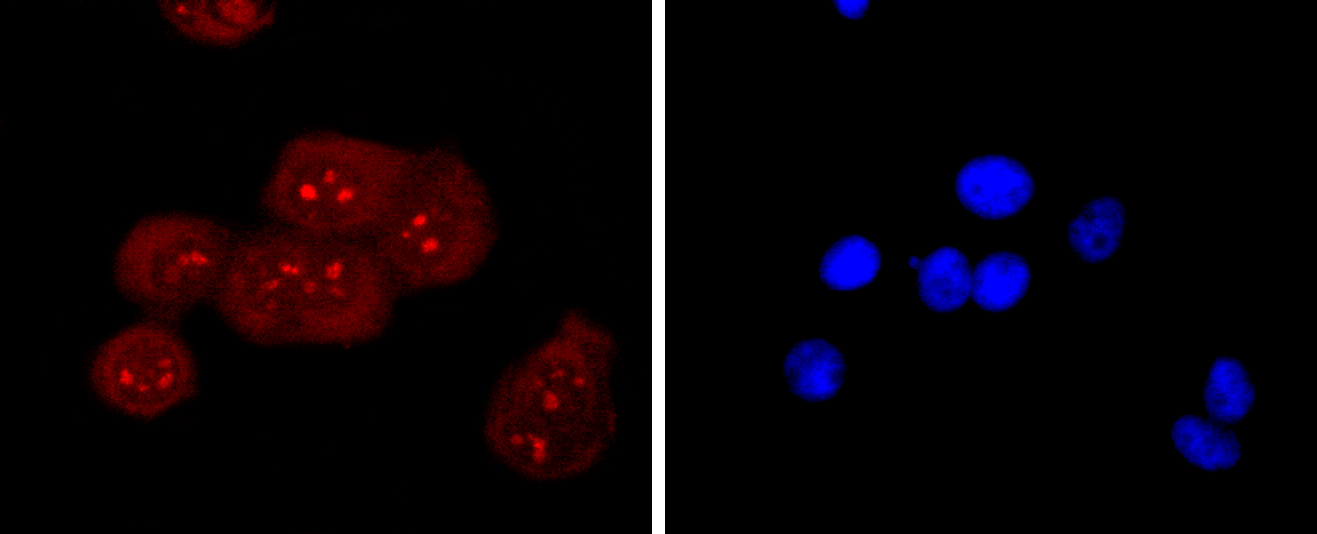Product Detail
Product NameRAGE Rabbit mAb
Clone No.JF0975
Host SpeciesRecombinant Rabbit
Clonality Monoclonal
PurificationProA affinity purified
ApplicationsWB, ICC/IF, IHC, FC
Species ReactivityHu, Ms, Rt
Immunogen Descrecombinant protein
ConjugateUnconjugated
Other NamesAdvanced glycosylation end product-specific receptor antibody Ager antibody MGC2235 antibody RAGE_HUMAN antibody Receptor for advanced glycosylation end products antibody
Accession NoSwiss-Prot#:Q15109
Uniprot
Q15109
Gene ID
177;
Calculated MW50 kDa
Formulation1*TBS (pH7.4), 1%BSA, 40%Glycerol. Preservative: 0.05% Sodium Azide.
StorageStore at -20˚C
Application Details
WB: 1:1,000-5,000
IHC: 1:50-1:200
ICC: 1:50-1:200
FC: 1:50-1:100
Western blot analysis of RAGE on mouse lung lysates using anti-RAGE antibody at 1/1,000 dilution.
Immunohistochemical analysis of paraffin-embedded mouse lung tissue using anti-RAGE antibody. Counter stained with hematoxylin.
ICC staining RAGE in A431 cells (red). The nuclear counter stain is DAPI (blue). Cells were fixed in paraformaldehyde, permeabilised with 0.25% Triton X100/PBS.
ICC staining RAGE in MCF-7 cells (red). The nuclear counter stain is DAPI (blue). Cells were fixed in paraformaldehyde, permeabilised with 0.25% Triton X100/PBS.
Flow cytometric analysis of Jurkat cells with RAGE antibody at 1/50 dilution (red) compared with an unlabelled control (cells without incubation with primary antibody; black). Alexa Fluor 488-conjugated goat anti rabbit IgG was used as the secondary antibody.
Advanced glycosylation end products of proteins (AGEs) are nonenzymatically glycosylated proteins that are associated with a variety of conditions, including diabetes and other vascular disorders, as well as amyloidosis. These proteins regulate cellular functions via specific cell surface acceptor molecules, such as RAGE (receptor for advanced glycosylation end products). RAGE is a type 1 membrane protein that is found on the surface of endothelial cells, mononuclear phagocytes and vascular smooth muscle cells. Binding of AGEs to RAGE results in the induction of cellular oxidant stress and activation of the transcription factor NFkB. Evidence suggests that the induction of oxidant stress results in the activation of an intracellular cascade involving p21 ras and MAP kinase, which leads to activation of transcription.
If you have published an article using product 49341, please notify us so that we can cite your literature.







 Yes
Yes



